Yoga: its benefits, types and how to perform
Yoga: its benefits, types and how to perform
Although yoga has been around for thousands of years in India, it is increasingly popular in many countries of the world. Whether yoga's recent rise in popularity is due to an increase in stress levels or is a Hollywood trend, it holds many benefits for those who incorporate it into their daily lives. In this article we'll talk about yoga, the benefits of performing yoga exercises, and you could need to do, in addition to how their performance and associated risks.
What is yoga?
What are the benefits of sport yoga?
What are the benefits of yoga exercises for pregnant?
What are the types of yoga?
What are the ways of doing yoga?
Practicing yoga at home
Are there risks to yoga?
What is yoga?
Yoga, or yoga, is a mental and spiritual sport, which aims to make the mind and body a harmonious unit, a sport that has its origin in India 5,000 years ago, in which no sports equipment is used. Yoga exercises are suitable for all ages, and yoga is not related to religion or any faith and there are no laws that restrict it.
Yoga is a fun and wonderful way to work to improve the strength and flexibility of the body at the same time, and it is easy to implement and can be practiced by everyone, not as it is commonly suitable for those who can touch the tips of their toes.
What are the benefits of sport yoga?
Yoga exercises are a system of healing between theory and practice, as their purpose is to create strength, awareness and harmony between both mind and body. Some types of yoga relax the body, others increase concentration, or raise the motor abilities of the muscles, but it is worth noting that all types of yoga contribute to the regulation of the breathing rate of the person practicing this sport, as well as support his overall health. Of the most important benefits of yoga as we recall next.:
Relaxation techniques in yoga relieve chronic pain, such as:
Low back pain.
Pains that result from arthritis.
Headache pain.
Pain associated with carpal tunnel syndrome.
For more: positive thinking and pain control
Reduce menstrual pain and premenstrual symptoms.
They help keep the heart healthy, and also contribute to the activation of blood circulation.
Reduce blood pressure.
Maintain a balanced nutritional representation.
Help burn fat and lose weight.
Contribute to an increase in the efficiency of the breathing process.
Increases the flexibility of body parts such as the back and shoulders.
Help replenish the body's energy and sense of vitality.
Increased muscle tone.
Improved athletic performance.
Protection from exposure to injuries.
Stress control, which is known to have devastating effects on the body and mind, as psychological stressors can reveal themselves in many ways, including back or neck pain, sleep problems, headaches, and inability to concentrate. Where to practice yoga:
Help get rid of anxiety and stress and help to relax.
Reduce insomnia.
It brings mental clarity and psychological calm, relieves chronic stress patterns, relaxes the mind, sharpens focus. It self and the body, in particular, is very important, it helps to discover and treat diseases early.
Yoga is also very effective in developing coping skills and achieving a more positive outlook on life, and unlike traditional methods of exercise, yoga integrates meditation, breathing together, and helps a person improve their mental health.
What are the benefits of yoga exercises for pregnant?
Yoga has many benefits for pregnant women, including:
Maintain body shape.
Pump blood better.
Reduction of tension ratio.
Increase the strength of the pelvic muscles.
Increase the expansion of blood veins.
Spiritual and physical bonds between mother and child increase with daily practice.
Strengthens and tightens the abdominal and lower back muscles, helping the mother to regain her correct posture after giving birth.
What are the types of yoga?
There are many different types of yoga, which may include species that require physical effort or types easy and convenient, which only require meditation. Here we list some of the types of yoga:
Vinyasa yoga
Vinyasa yoga is a popular type of yoga, as the word Vinyasa means "connecting movement with breathing". During this type of yoga, different body postures are usually performed one by one in the form of smooth and sequential movements, which the person usually memorizes and thus performs during meditation, which is then called kinetic meditation, which is similar to dance. Venyasa yoga is also performed in the presence of calm and gentle music, usually (but not always) practiced in a dark room, or sometimes by candlelight with the person closing his eyes. This pattern contributes to calming the mind and nervous system.
Ashtanga yoga
Ashtanga Yoga (also known as traditional Indian yoga), like Vinyasa yoga, involves a number of body poses that synchronize the breath with the movement, and these movements are smooth and sequential. It is usually performed this type of yoga without the presence of music, sometimes silently and without having to verbal instruction by the instructor. This style is suitable for those people who prefer to commit to Sports routinely, and those who prefer to do yoga that has more physical exercises but still has the spiritual side as well.
Iyengar Yoga
In Iyengar Yoga, the emphasis is on the regularity of body movements and postures, by regulating breathing using pranayama breathing training, an exercise that helps a person control their breathing while doing yoga exercises so that breathing becomes synchronized with body movements, and by using props such as cushions, blankets, straps, wall, chair, etc . This style of yoga is usually taught without the presence of music, and at a slow speed, so as to help the student perform body postures more deeply.
This style of yoga is suitable for all ages, for all people regardless of their skill level, but may be especially suitable for older people and people with limited mobility.
Bikram yoga
Bikram Yoga includes 26 body poses, as well as two breathing exercises. The duration of the exercise is ninety minutes and is done in a room with a temperature of 105 degrees Fahrenheit (equivalent to 40 degrees Celsius) with a relative humidity of 40%. The room must be bright, and there must be a mirror opposite the students, to ensure that the student performs the poses correctly and regularly. It is noteworthy that there is no music during the performance of this type of yoga.
Practicing yoga in a high temperature environment may contribute to making the trainee able to perform various body postures deeper, improve blood circulation, and help detoxify the body.
Jivamukti yoga
Jivamukti yoga classes include a number of chants in Sanskrit, pranamaya breathing exercises, and each class usually has a different theme or main idea. This style of yoga is a good combination of spiritual exercises and physical exercises.
Hatha yoga
Hatha yoga is a traditional style of yoga, designed to increase a person's ability to balance between opposing forces, as it balances strength and flexibility, between physical and mental energy, and between breathing and body movements. Usually called beginner yoga, hatha yoga is a gentle and light type of yoga. Hatha yoga classes usually involve a combination of different body postures and movements, pranamaya breathing training, and meditation.
Power yoga
Power Yoga is more active and is performed at a higher speed compared to other types of yoga. Ashtanga yoga poses are usually performed during power yoga but less regularly and without the need to always perform them in the same sequence, as may be done with music. Power yoga helps strengthen muscles and increase their flexibility, and the variety in the sequence of movements keeps the brain engaged during exercise.
This style of yoga is suitable for those who like Ashtanga yoga but want more flexibility while doing various exercises, and it is also a suitable option for those who want to do a less spiritual yoga style.
Yoga prenatal
Prenatal yoga provides a number of stress relief exercises for pregnant women, and breathing exercises can be useful for the mother during labor and childbirth. Because this style of yoga is intended for pregnant women, it excludes any strenuous or stressful physical poses and movements of the mother, or those that may be considered unsafe for the fetus. But it is worth noting that pregnant women consult a physician before performing this style of yoga.
Yin yoga
Yin Yoga is a meditative practice that allows the body to become more relaxed while performing various body postures and without any effort or strength. Called Taoist yoga, this style of yoga focuses on increasing the length of the connective tissues present in the body, and is considered a complementary style of yoga to other yoga styles that focus on muscle formation such as Yang yoga.
There are many other types of yoga that are not mentioned earlier, so if you want to do yoga, consult your instructor to help you choose the right yoga style for you.
What are the ways of doing yoga?
Although there are more than a hundred types, or schools, of yoga, they are similar to each other. They usually consist of breathing exercises, meditation, virtual postures that serve to extend and increase the flexibility of various muscle groups.
There are steps to follow in yoga to get better results:
Breathe deeply.
Extend the shoulders.
Extend the upper part of the body.
Make simple movements regularly.
Relax for 5 minutes at the end of the exercises.
Practicing yoga at home
Easy yoga exercise in the house after taking some arrangements and celebrations, where you can see the sections that explain the different asanas and interest of each, explain the following points simple steps to practice yoga at home, without the need to gyms:
Sets a comfortable and quiet spot for yoga practice. And in the case of an additional room that can be allocated for this, this is great. Brush the rug on which yoga is practiced and preferably left like this, this is an invitation to practice yoga again.
Yoga practice does not require a lot of accessories, only a yoga mat is required, preferably not sliding.
It is recommended to take safety precautions, avoid injuries, do not push yourself over the line, especially in areas of the body that are at risk, including the knees, hips, spine, and neck. When feeling any pain, it is recommended to adjust the posture or completely exit the yoga position if necessary, but without the use of force and pressure.
Specialists advise to warm up the body properly before trying to progress with yoga movements and make sure that the correct posture is taken in all poses.
Choosing the right form of yoga is preferred by asking some questions, including why yoga is practiced, and what the body or mind needs it.
It is advisable to practice yoga regularly and enjoy even if only once a week, and the increase on this depends on individual abilities. If it is very important to achieve a goal, yoga three times a week is excellent for this purpose, so realistic goals must be set that can be done. Doing yoga for 10 minutes is still good
Are there risks to yoga?
The risks associated with doing yoga exercises include:
Injury to muscle tension, due to people skipping their physical abilities.
Intermittent breathing and emphysema, that is when a forced interruption of breathing occurs during yoga.
Neglect of warm-up harms the joints.
Arteries are damaged, in case of excessive stretching of the head and neck while doing exercises.
Benefits of yoga for diabetes some statistics have shown an improvement in the blood sugar level of yoga practitioners with diabetes, as a result of relaxation techniques and lifestyle and activity changes. Read also: can a diabetic exercise safely? Benefits of yoga for carpal tunnel syndrome yoga practitioners with carpal tunnel syndrome after twice-weekly sessions for 8 Weeks noted a marked improvement in the condition in terms of reduced pain intensity. Strength and physical flexibility regular exercise greatly helps the vitality and flexibility of muscles and joints such as shoulders, torso, ankles and their movements. The benefits of yoga for the treatment of bronchial asthma some cases of bronchial asthma found an improvement in their symptoms, but that does not mean to stop drugs. One of the most important breathing techniques in yoga: sit straight and take deep breaths until you feel that your lungs are filled from the abdomen first and then the chest, and take the breath out of your mouth as the sound of the sea. Benefits of pre-exam yoga from the benefits of pre-exam yoga and you feel calm and relaxed without anyone feeling, just sit and lift your shoulders and move them back then forward and move your head to one of your shoulders and then the other to move the neck muscles, sit in a chair and bend your body forward and leave your The benefits of yoga in improving your mood always end yoga exercises by putting your hands in a prayer position and the word "namastai", which means your happiness and gratitude for your life and your world and yoga not only helps the body to get flexibility and strength, but also the mental and spiritual part that saves you from stress and mental stress and Important equipment for yoga mats or similar: a comfortable type of rubber for example and does not slip. Towel: get rid of sweat during or after exercise. Light cover: if it's cold and you need exercise, you can lie on the floor. Some rubber strips: which you need to hold in a certain position or stretch. Usually, the yoga session will last about 75 minutes of 15-20 minutes exercises to line and 15-20 minutes of relaxation. Clothing suitable for yoga exercises you can wear anything as you like but it is better to be comfortable clothes and allow you to maximise movement, comfort and do movements well. Yoga exercises for beginners if you can find a place to practice yoga under the supervision of an expert, you can start with the basic poses and exercises, but if you do not find this you can follow the recordings spread on various sites. Is yoga safe? Better to consult the doctor before starting yoga, especially if you have disease in the eye or bone or other, and you can also learn to program your workout and the various supposed to do and that the doctor is competent to decide whether there is a risk of doing any of them or not. Yoga warm-up exercises try to sit in a quiet place then lift your shoulders, move them back then forward and move your head right and left to move the neck muscles. Choose a chair, relax, bend your body forward, leave your head and arms relaxed as if you dropped a pen on the floor and take a deep breath
Some important and very useful yoga poses
Warrior posture
Practice yoga helps you to regain your energy and relieve the burden of traditional exercises because it takes calm positions and movements like the warrior position, and even help you to enter the world of your daily duties with vigor and strength which it gains you from concentration in thoughts, and to take this position push one of your feet forward and bend your knee, move
Triangle position
Spread your leg forward and bend your body at the hip joint with your hand on this man's cane, now spread your arm on the other side to the sky and raise your head slowly towards it you will feel a stretch in your leg and hip joint and then repeat it vice versa, while changing movements do it slowly and calmly.
Tree position
Yoga generally gains you a sense of happiness, calmness and confidence and the position of the tree in particular increases the balance physically and psychologically, stand with your legs adjacent and fixed on the ground, and slowly raise one on the other until you reach the muscles of the tibia or thigh and move your hands from the prayer position upward above your shoulders,
Mountain position
Do you keep your shoulders installed two all the time at school or work? Stand with your hands down and your back straight and relax, move your hands to the prayer position and then spread them to the sky and bend your back gradually so that your face also looks at the sky and take deep breaths .
Cat pose
If you spend a lot of time on a desk or feel back pain as a result of bending for a long time, taking a Cat Pose will give you a great deal of relaxation, lean your knees on the floor and make your back straight, also put your hands on the floor, take a deep breath and take it out slowly to get
Dog pose down
Start on your knees and hands as in the previous position and then move your hands forward slightly and divide between your fingers, press your toes and lift your knees off the floor to be with your body letter (V), your feet should be apart and knees slightly bent, use a yoga mattress if possible to help you exercise easily.
Wood position
Work mainly on the abdominal muscles, lie in the position of traditional lifting exercises with your hands at the level of your shoulders and legs straight, do not let your belly relax down, make your abdominal muscles, thighs and seat all tightened and stay in the position for 30 seconds, your body should appear flat as a piece of wood during this position.
Cobra pose
This position improves your overall breathing system, lie down so that your face is facing the ground, your legs are flat, your feet are facing the ground, lift your chest, resting on your hands so that you are at the level of your shoulders and your shoulders are relaxed, always keep your pelvic area on the floor and lift your chest off the floor
Twisted chair position
Sit on the floor with your legs straight forward, now place your right foot above the left so that your right foot touches the floor on the other side, now bend your left foot and move it inward so that it almost touches your right seat, put your right hand behind you and lean on it and bend your left hand and put it on your right knee, sit tight and
Baby posture
This pose gives you calm and calm, sit on your knees resting on your fingertips, sit on your heels, spread between your knees, now bend your upper part on the floor, spread your arms straight on the floor, put your forehead on the floor, relax and breathe deeply. Now your knowledge of those important information about yoga and its benefits... are you gonna do later?
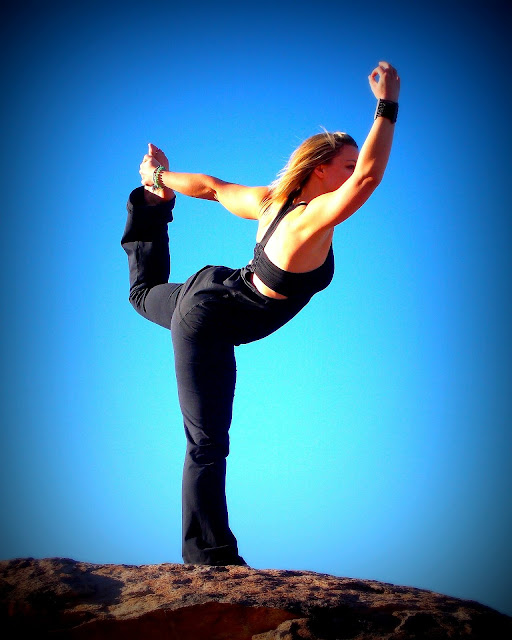
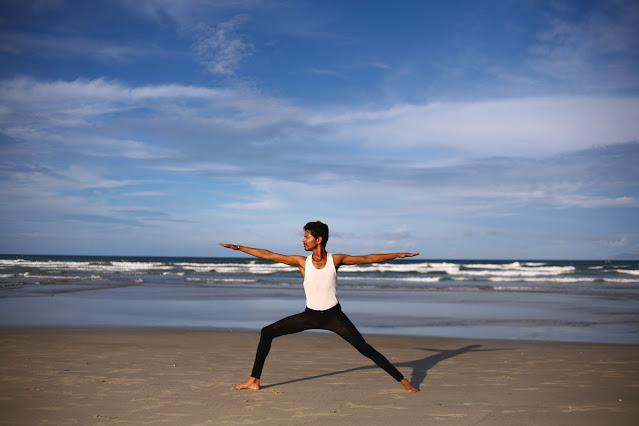
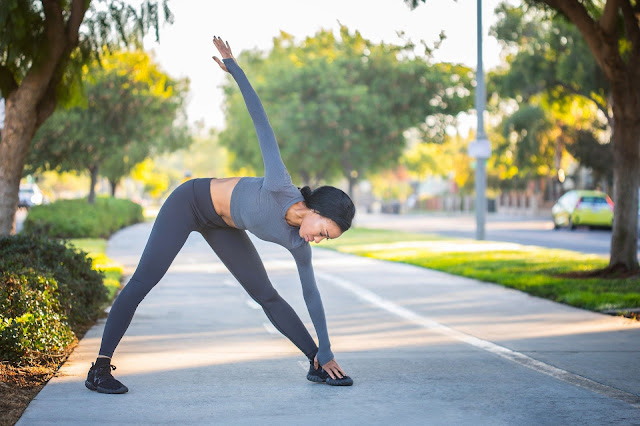


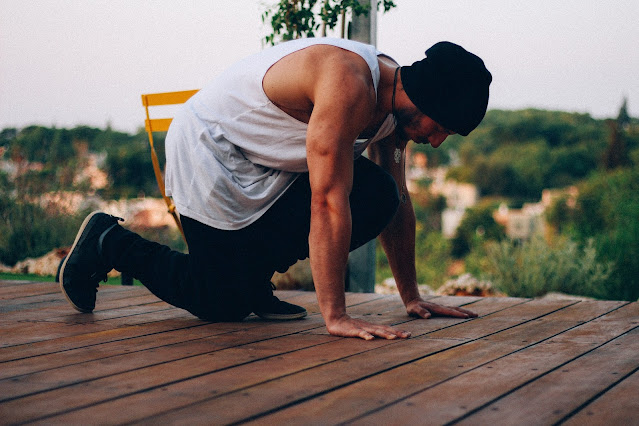
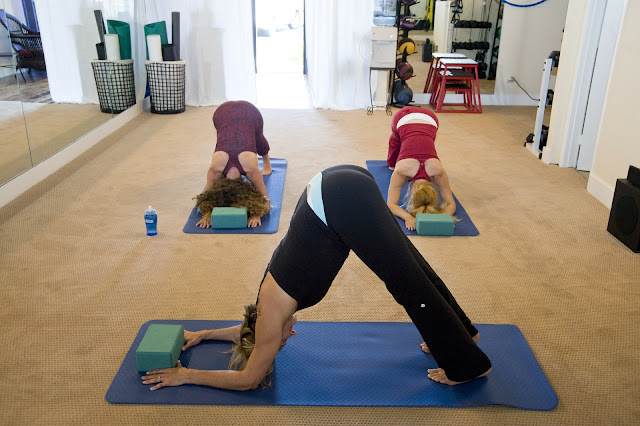
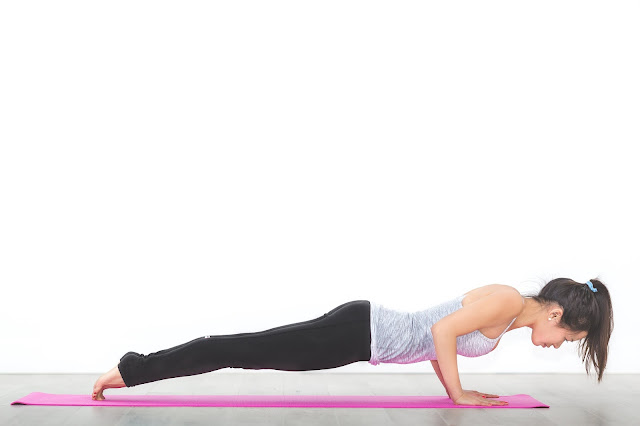


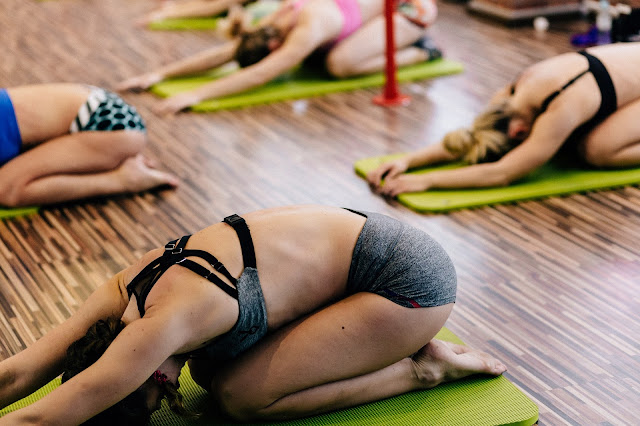


Comments
Post a Comment